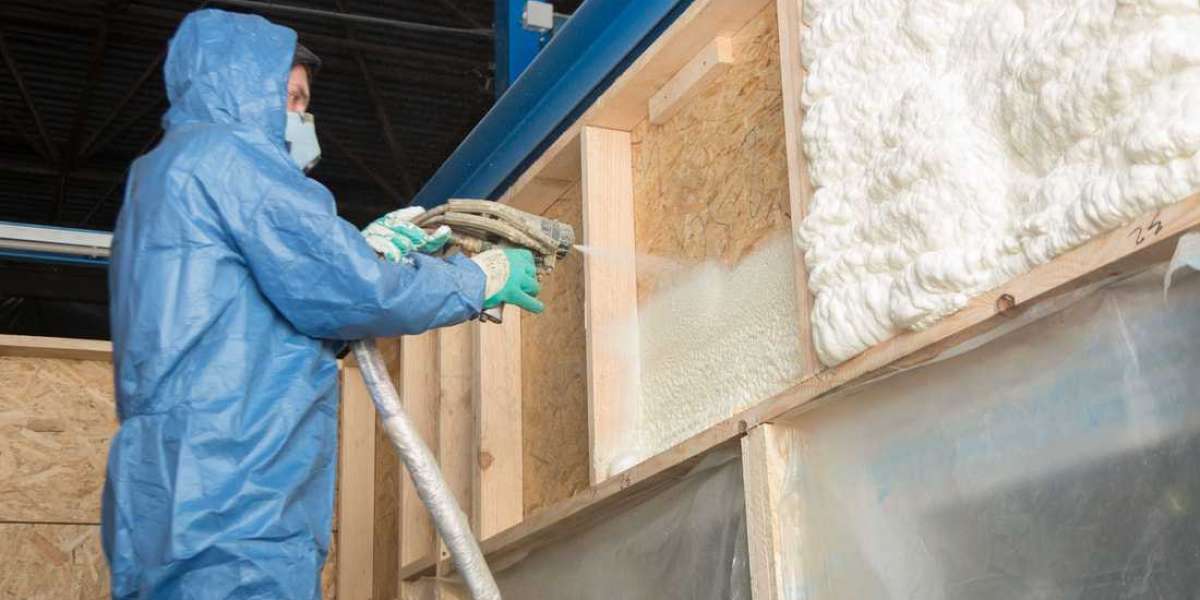Spray foam insulation is a popular choice for homeowners looking to improve energy efficiency and comfort. However, many may not realize that applying a coat of paint over spray foam insulation can significantly enhance its durability and performance. Painting over spray foam insulation is a simple yet effective way to protect and extend the life of your insulation.
Understanding Spray Foam Insulation
What is Spray Foam Insulation?
Spray foam insulation is a type of insulation that expands upon application. It creates an air-tight seal, making it an excellent choice for both residential and commercial buildings. There are two primary types of spray foam: open-cell and closed-cell. Both types offer unique benefits and applications, particularly in climates like those found in Anderson County, Texas.
Benefits of Spray Foam Insulation
- Energy Efficiency: Spray foam insulation significantly reduces energy bills by minimizing air leaks and heat transfer.
- Moisture Resistance: Closed-cell spray foam acts as a barrier against moisture, reducing the risk of mold and structural damage.
- Sound Dampening: Open-cell spray foam provides excellent soundproofing capabilities, making it ideal for noisy environments.
Why Paint Over Spray Foam?
The Protective Layer
Applying paint over spray foam insulation creates a protective barrier against environmental factors. This protective layer helps to shield the insulation from UV rays, dirt, and debris. Over time, exposure to these elements can degrade the quality of the spray foam, reducing its effectiveness.
Enhancing Aesthetics
In addition to protection, painting over spray foam can improve the visual appeal of spaces where it is applied. While spray foam is typically used in concealed areas such as attics and walls, exposed areas may benefit from a coat of paint, providing a clean and finished look.
Increased Durability
One of the primary reasons to paint over spray foam insulation is to enhance its durability. A paint layer can protect against abrasion and mechanical damage, especially in high-traffic areas. By preventing wear and tear, homeowners can extend the lifespan of their insulation.
Choosing the Right Paint
Types of Paint Suitable for Spray Foam
Not all paints are suitable for use over spray foam insulation. Homeowners should consider the following options:
- Acrylic Paint: This is one of the most common choices for painting over spray foam. It adheres well and provides a durable finish.
- Latex Paint: Latex paint is another excellent option due to its flexibility and ease of application. It also dries quickly and has low VOC (volatile organic compound) levels.
- Elastomeric Coating: This type of paint is ideal for outdoor applications as it provides superior UV protection and flexibility.
Factors to Consider
When selecting paint, homeowners should consider the following factors:
- Climate: In Anderson County, where temperatures can fluctuate, selecting a paint that can withstand heat and humidity is crucial.
- Application Area: Consider whether the paint will be applied in an indoor or outdoor setting to ensure optimal durability.
Application Techniques
Proper Preparation
Before painting, it's essential to prepare the surface of the spray foam insulation adequately. This preparation includes:
- Cleaning: Remove any dirt or debris from the surface to ensure proper adhesion.
- Drying: Ensure the spray foam is completely dry before applying paint, as moisture can lead to peeling.
Painting Process
- Priming: Although spray foam typically doesn’t require a primer, using one can enhance adhesion and durability.
- Applying Paint: Use a roller or spray applicator for even coverage. Multiple thin coats are better than one thick coat to avoid dripping.
- Drying: Allow sufficient drying time between coats according to the manufacturer’s instructions.
Long-Term Maintenance
Regular Inspections
Once painted, it's essential to conduct regular inspections of the insulation. Look for signs of wear, peeling paint, or damage to the foam itself. Addressing these issues early can prevent further deterioration.
Repainting
Over time, the paint may need to be reapplied. Factors such as UV exposure and humidity can affect the paint’s integrity. Regular touch-ups will help maintain the protective layer over the spray foam insulation.
FAQ Section
1. Can I paint over spray foam insulation myself?
Yes, homeowners can paint over spray foam insulation themselves, provided they follow proper preparation and application techniques.
2. What type of paint should I use on spray foam insulation?
Acrylic or latex paint is recommended for most indoor applications, while elastomeric coatings are best for outdoor use.
3. How often should I repaint over spray foam insulation?
Repainting should be done as needed, typically every few years or when signs of wear become visible.
4. Does painting spray foam insulation affect its R-value?
No, painting does not significantly affect the R-value of spray foam insulation. The insulation's performance will remain intact as long as the foam is properly maintained.
5. Is there a risk of the paint peeling off spray foam insulation?
Proper surface preparation and the right type of paint can minimize the risk of peeling. Regular maintenance will also help ensure the paint remains intact.
Conclusion
Painting over spray foam insulation not only enhances its durability but also improves aesthetics and provides protection from environmental factors. Homeowners in Anderson County and surrounding areas can significantly benefit from this simple yet effective process. For those considering insulation solutions, DD Insulation LLC is ready to help with your spray foam insulation needs. For more information or to schedule an appointment, call (903) 389-5705.




